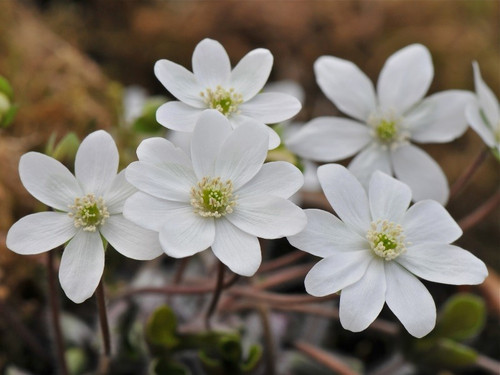The Ultimate Guide To Hepatica Nobilis
Hepatica Nobilis is the plant to use if you want to add a splash of color to your garden without requiring much maintenance. It is a herbaceous, perennial, and flowering plant species in the Ranunculaceae buttercup family.
Growing native in woodland areas, the Hepatica is well sought after. Some common names for this plant include liverleaf, liverwort, common hepatica, pennywort, kidneywort, crystal wort, lover moss, and ivy flower.
Hepatica Nobilis is a slow-growing and semi-evergreen plant that produces purple, pink, blue, or violet-blue flowers with beautiful white stamens in the middle.
Its leaves and flowers usually grow from rhizomes instead of roots above the ground. The plant can reach between seven and ten centimeters tall and spread between 10 and 12 centimeters at maturity.
The kidney-shaped leaves are fleshy and hairless and have three lobes, reaching between seven and nine centimeters wide and five and six centimeters long at maturity. The upper side of the leaves is usually dark green with whitish streaks, while the lower side is reddish brown or violet.
The leaves grow during or after flowering, mostly around spring, and remain green and fleshy through winter. Once the flowers emerge, they stay open, especially during sunny days, and remain for weeks.
Growing Requirements of Hepatica Nobilis
Hepatica Nobilis is an easy perennail to grow and take care of. You can plant it in your city, cottage, woodland, or rock garden as a border, edging plant, or pot, depending on how you plan to use it.
It works in moist, well-drained, humus-rich, and slightly alkaline soils. Ensure you top dress it with leaf mold every fall to prevent root disturbance and guarantee its regrowth during the following season.
It also requires partial shade, meaning you should plant it under other plants or give it direct sun exposure for a few hours daily.
Because of its wide spread, it leave a space of around 12 cm between them and other plants. In addition to its ease of planting and minimal maintenance, Hepatica Nobilis is generally disease free, but ensure you look out for slugs and snails.
You can propagate your plant using the division method, ensuring to keep all the roots are intact. Alternatively, you can harvest the seeds after they ripen, approximately 60 days after the plant flowers, preferably when it is still green. Sow the seeds immediately on compost and cover them under one centimeter of horticultural grit. Water them constantly and let them rest under a shade.
Hepatica Nobilis for sale online at Perennial Nursery.
Observe the new plants often to ensure they grow well and moisten the soil.
Hepatica Nobilis are shipped bare root.
FAQ
1. Does Hepatica Nobilis like sun or shade?
A. Hepatica Nobilis, also known as liverwort, is a genus of herbaceous perennial plants that typically prefer partial to full shade.
2. Are Hepatica Nobilis deer resistant?
A. Hepatica Nobilis is considered to be deer resistant.
-
HEPATICA Review
Received on time and was well packed. Looking forward for it to grow in my yard.
-
hepatica nobilis
Excellent quality of roots. I have fantastic flowers!






